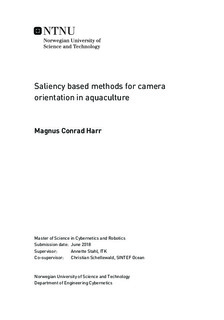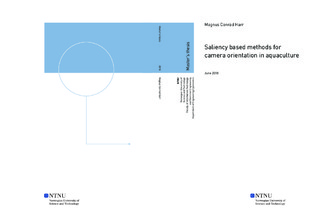| dc.contributor.advisor | Stahl, Annette | |
| dc.contributor.advisor | Schellewald, Christian | |
| dc.contributor.author | Harr, Magnus Conrad | |
| dc.date.accessioned | 2019-09-11T11:44:00Z | |
| dc.date.created | 2018-06-04 | |
| dc.date.issued | 2018 | |
| dc.identifier | ntnudaim:18614 | |
| dc.identifier.uri | http://hdl.handle.net/11250/2616146 | |
| dc.description.abstract | This thesis looks into the applicability of visual saliency as a basis for autonomous camera orientation. Autonomous re-orientation is expected to be a key component in future computer vision-based monitoring systems: a fish-cage is a highly dynamic environment, and even a well-placed camera may no longer be optimally oriented for data gathering if left static over time. The underwater performance of visual saliency algorithms are tested and discussed.
A few different attempts at addressing a major concern related to the cage net itself are made. Most notable is a filtering scheme based on an optical flow algorithm by Gunnar Farnebäck, the use of which successfully solves the presented challenge but also introduces a new problem. In conclusion, visual saliency can provide a viable basis for camera orientation, but only under certain conditions. | en |
| dc.language | eng | |
| dc.publisher | NTNU | |
| dc.subject | Kybernetikk og robotikk, Innvevde datasystemer | en |
| dc.title | Saliency based methods for camera orientation in aquaculture | en |
| dc.type | Master thesis | en |
| dc.source.pagenumber | 70 | |
| dc.contributor.department | Norges teknisk-naturvitenskapelige universitet, Fakultet for informasjonsteknologi og elektroteknikk,Institutt for teknisk kybernetikk | nb_NO |
| dc.date.embargoenddate | 2020-06-04 | |

